Backstage with Matthew: Prototyping New Worlds of Fashion
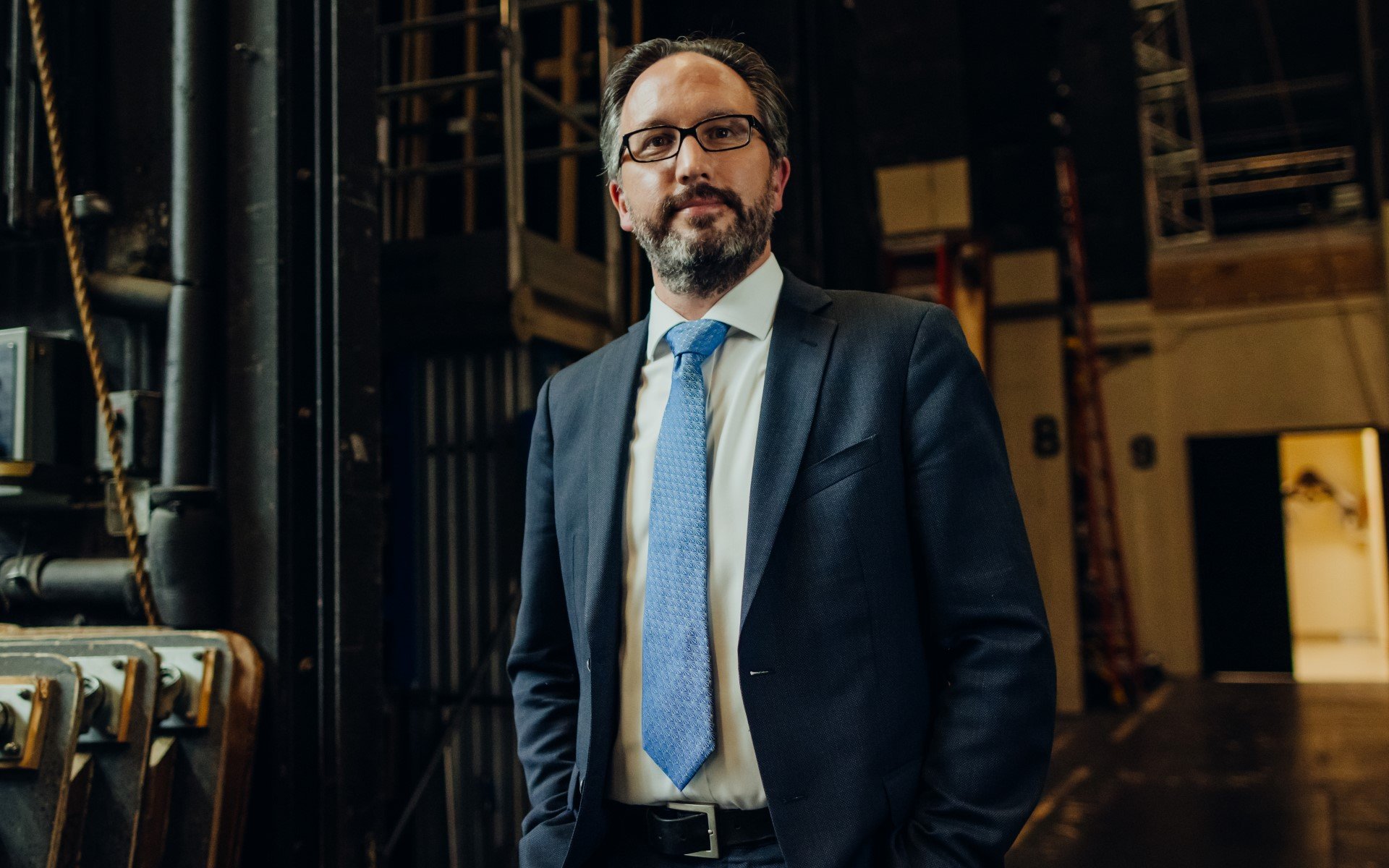
I thought it would be interesting to share some of the activity happening in our Norby Anderson Costume Shop right now. Both of these new productions include fantastical elements, and it was fascinating to explore them with our Costume Director Daniele McCartan, Costume Shop Manager Jai Alltizer, and Senior Production Supervisor Galen Till. The level of creativity they are overseeing is breathtaking, bringing alive the designs of Jessica Jahn (Parsifal) and Anita Yavich (The Monkey King) with stunning beauty.
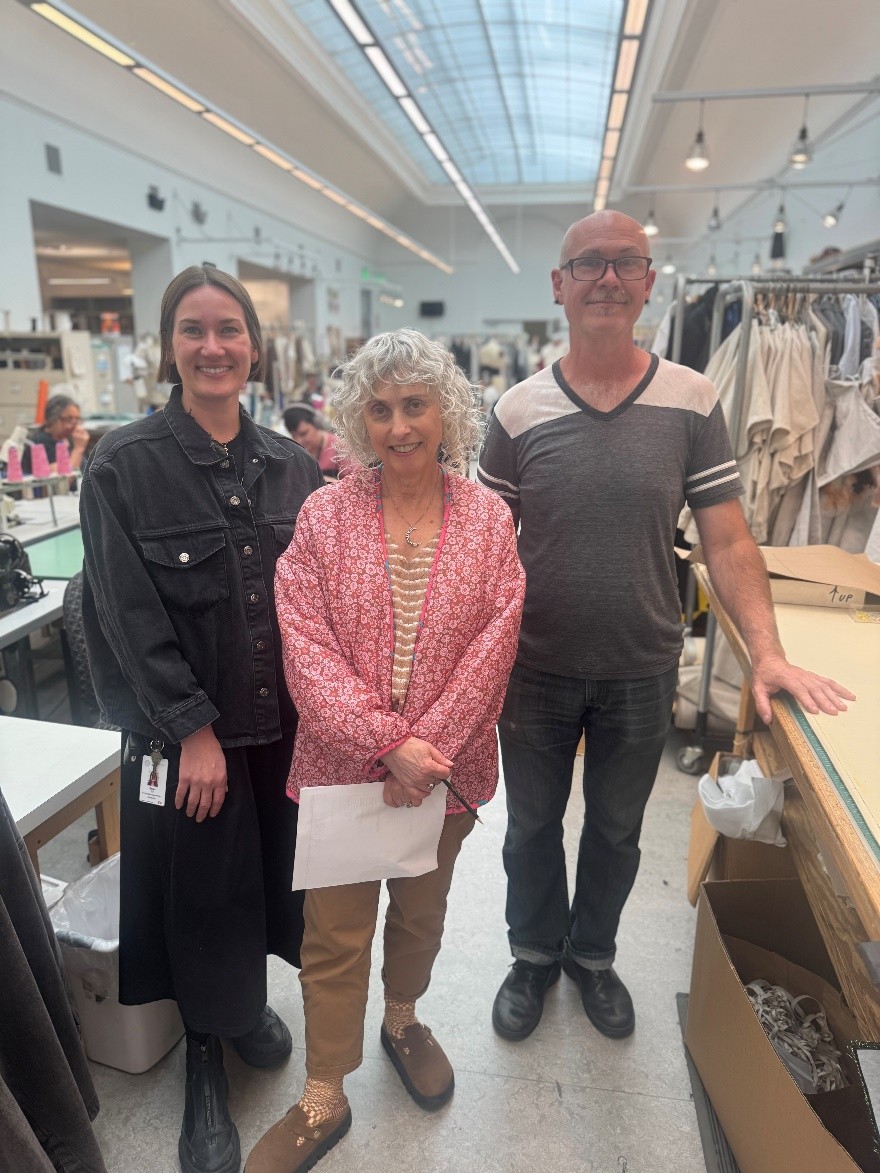 L to R: Galen Till, Daniele McCartan and Jai Alltizer in the Norby Anderson Costume Shop
L to R: Galen Till, Daniele McCartan and Jai Alltizer in the Norby Anderson Costume Shop
Because so many of the costumes in both of these productions are sculptural and fantastical, there’s important research and development (R&D) work that has to happen before the actual costumes are crafted. That’s true with our wonderfully evocative costumes for the Flower Maidens in Act II of Parsifal—these are the temptresses that try to lure the Knights of the Grail from their ascetic vows. As you can see in Jessica Jahn’s design (bottom left below), the costumes are alive with floral/coral-like features. Galen is working to R&D the weight of these floral explosions—testing clusters of fabrics that will hold their shape, but not overly weigh down the costumes. The teal-blue costume below is an early-stage prototype: Galen will go back and forth with designer Jessica Jahn, refining and adjusting before moving into production. This also allows for refinement of the actual shape of the dress—they will be lowering the neckline from what you see here.
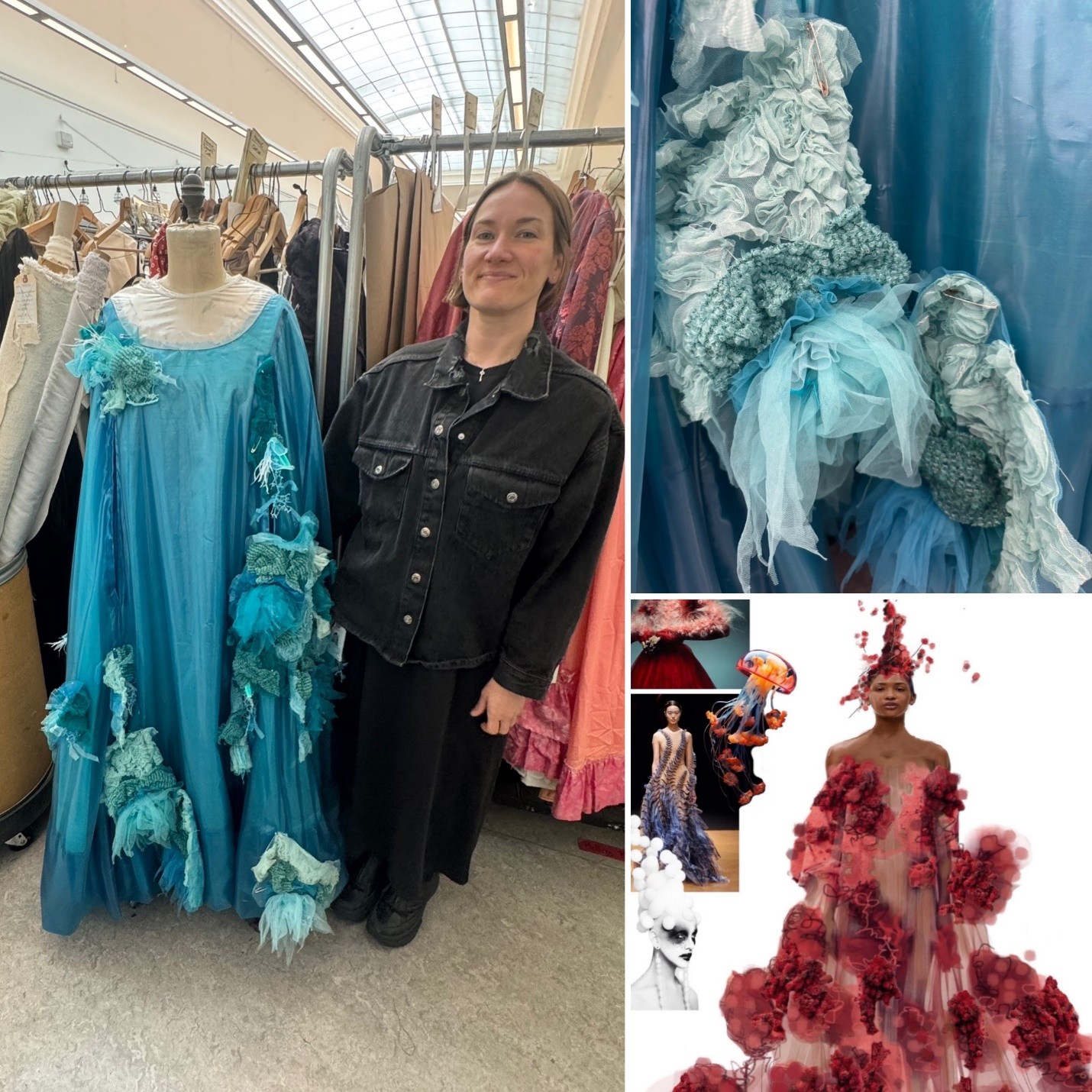
R&D is also underway for the sculptural costume for Kundry—the complex character in Parsifal who both tempts our title knight, but also guides him on his quest. She will have a number of looks in the production, getting gradually younger through the opera, and her first look is particularly striking with an amazing dress (and wig) that radiates energy and presence. You can see in the top right photo below the solution that Master Draper, Amy Ashton Keller, is now creating. Into an elegant underlayer, Amy is weaving strands of raffia, securing them with light rope and creating a lightweight, fluffy, hairy texture that will keep its shape onstage. The result should be stunning!
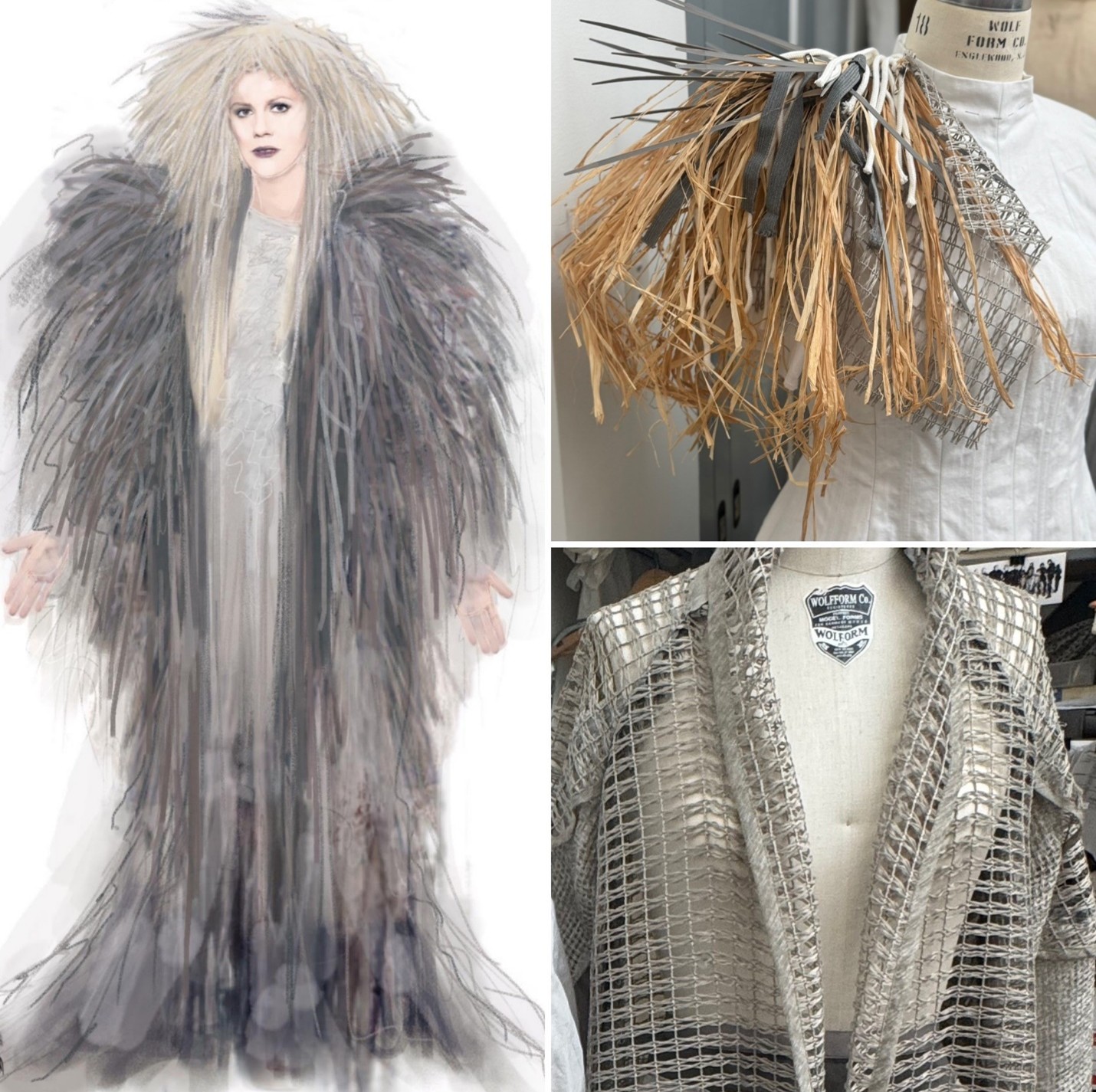
In Parsifal, over the course of the opera we see the waning relevance and power of the Knights of the Grail as they atrophy in the absence of new leadership (ultimately being restored and revived as Parsifal is recognized as their new leader). As such, in Act III we see the knights’ world in a state of decay, both scenically and in their appearance. Their white robes are now covered in wounds (an unhealable wound afflicts their leader Amfortas through the whole opera), and those wounds are being created by our Senior Painter/Dyer Amy Van Every. After a process of R&D to find the right approach, she settled on a pre-bought brocade fabric that you can see on the roll in the top right photo. Onto that she then adds a substance she makes from sawdust (courtesy of our Scene Shop in Burlingame!) and Flex Glue, using the pattern of the brocade to guide the placement of the sawdust. The combination of the black textured sawdust on top of the brocade creates the intensity of the wound that will allow it to be understood from out in the house. The team then cuts around the sawdust “wound” and sews it to the garment as an appliqué before the Dyers then paint around it, which creates a watercolor, rust-like effect.
One interesting note here is that part of the R&D process is making sure that what we create can be cleaned. So, before this solution was locked in, a sample was sent to our trusted dry cleaner. It passed the test! (Just as a note, the outer layers of costumes are dry cleaned once the production is finished; layers next to the skin will be washable between performances.)
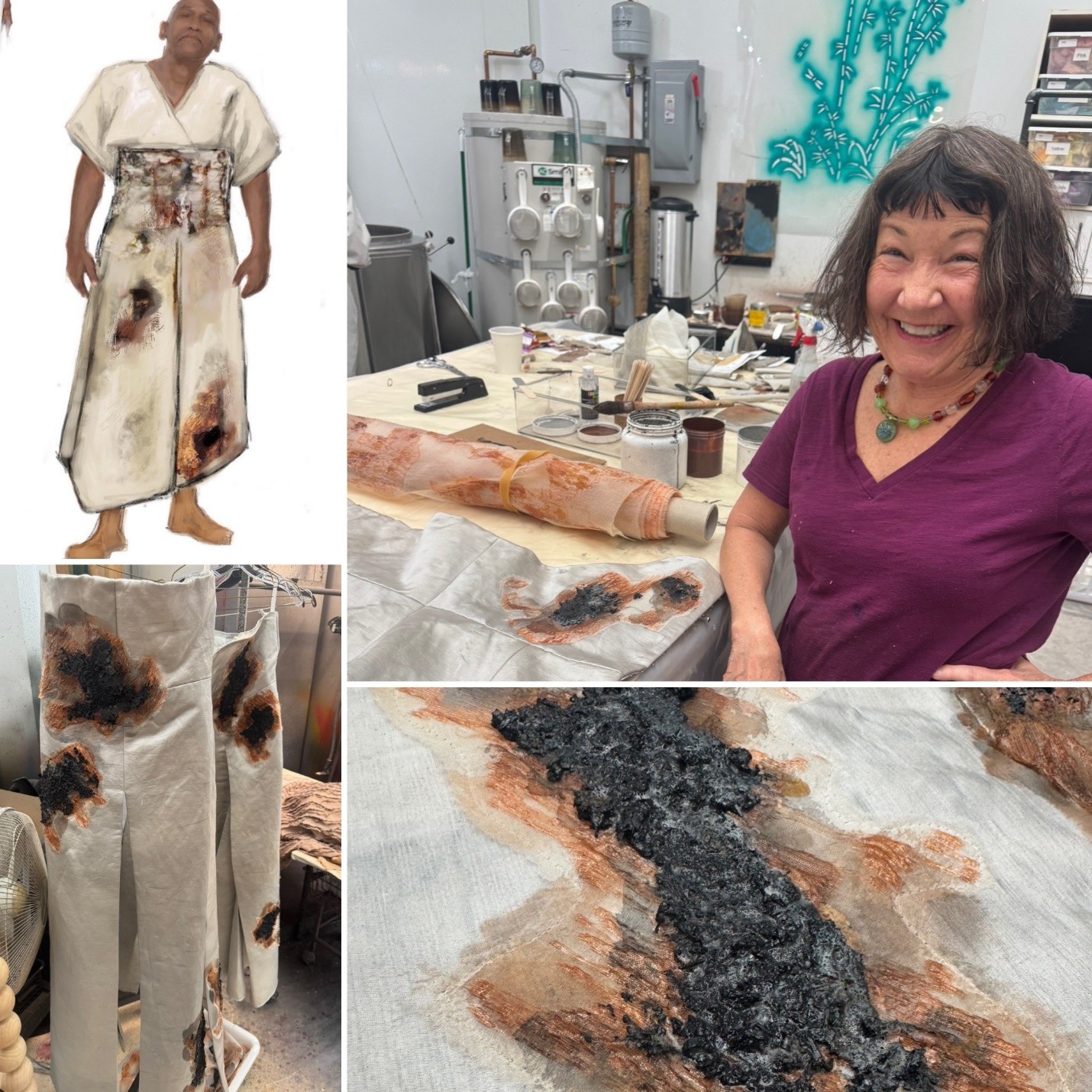
While I was visiting, I also had a chance to see some of the dyeing work in process for the fabric for one of Kundry’s costumes. Dyer/painter Karen Lewis was preparing a neutral fabric in our dye vat, before the fabric is hung to dry.
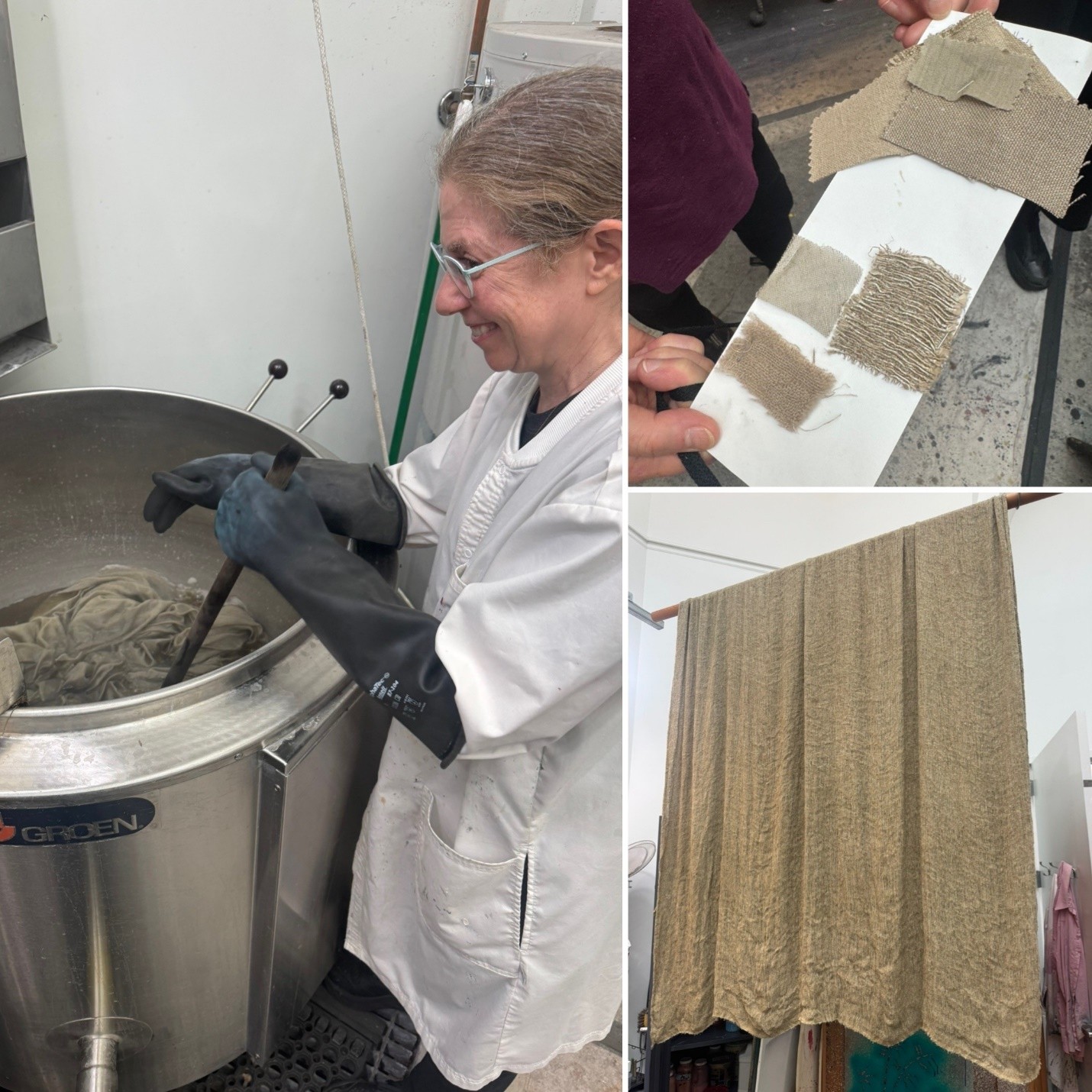
Walking through the shop we quickly shifted gears from Parsifal to Monkey King and some of the jaw-dropping fabrics and designs that are coming together for that production.
Jai Alltizer, who is costume supervisor on The Monkey King, shared with me some of the unique processes that we’re using here, particularly for the chorus gods’ costumes (as below on the left). These are metallic, more sculptural elements and for these we are using a mixture of heat-press foiling (as in the pink tabard that Jai is holding), and laser-cut pieces (as in the neon blue belt below). These are both techniques that are unique to this production and so we send these out to be manufactured, the foiling in New York, the laser cutting in Los Angeles.
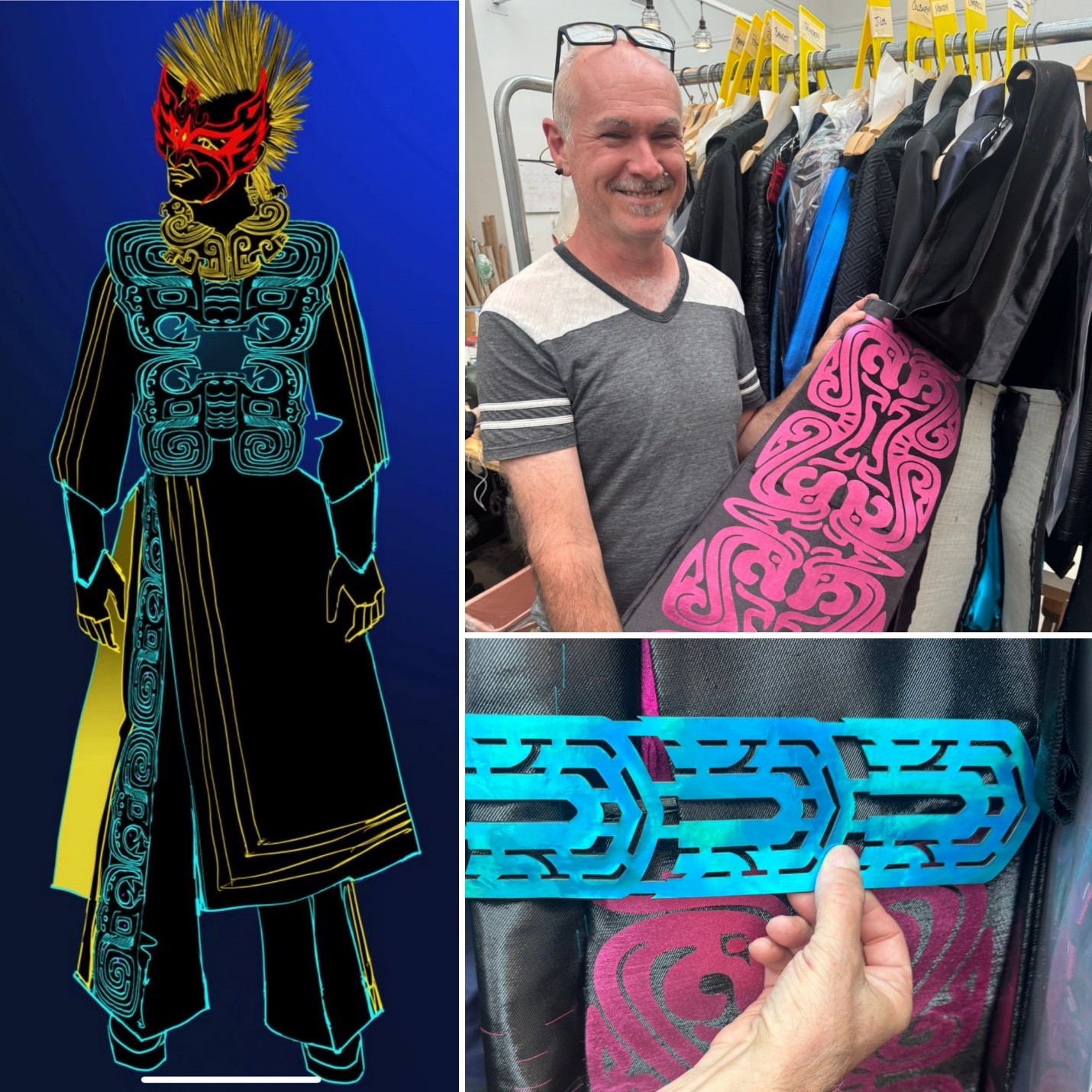
Going back to the note about cleaning and how we construct costumes in layers to enable cleaning, that is also important here. These metallic pieces are constructed as add-on layers. They cannot be dry-cleaned, and so they are designed to be layered on separately from the actual clothing. You can see an example of the base layers below, like the blue-armed jacket. That will be easily cleanable, and then on top of that we will layer the metallic elements. That will also make it much easier to resize the costume when necessary for another house.
The photos below give a sense of some of the fabrics being used for The Monkey King layers. A particularly interesting fabric is the one in the bottom right. This is called mud silk and it is an incredibly ecological fabric that dates back 2,500 years in Southeast China. Silk is layered into the mud of the riverbed, dyeing it with yams and leading to a textured fabric black on one side, orange on the other. You can read more about the process here.

Not all of the Monkey King is bright action-hero costuming. A beautiful counterpoint exists both musically and visually with the character of Guan Yin, the goddess who is the deus ex machina guide for the Monkey, and whose chorus of Bodhisattvas punctuate the action adventure with moments of beautiful reflection. (You can hear one of those arias on our website here; scroll about halfway down the page). You can see some of the work on the bodhisattvas costumes below.
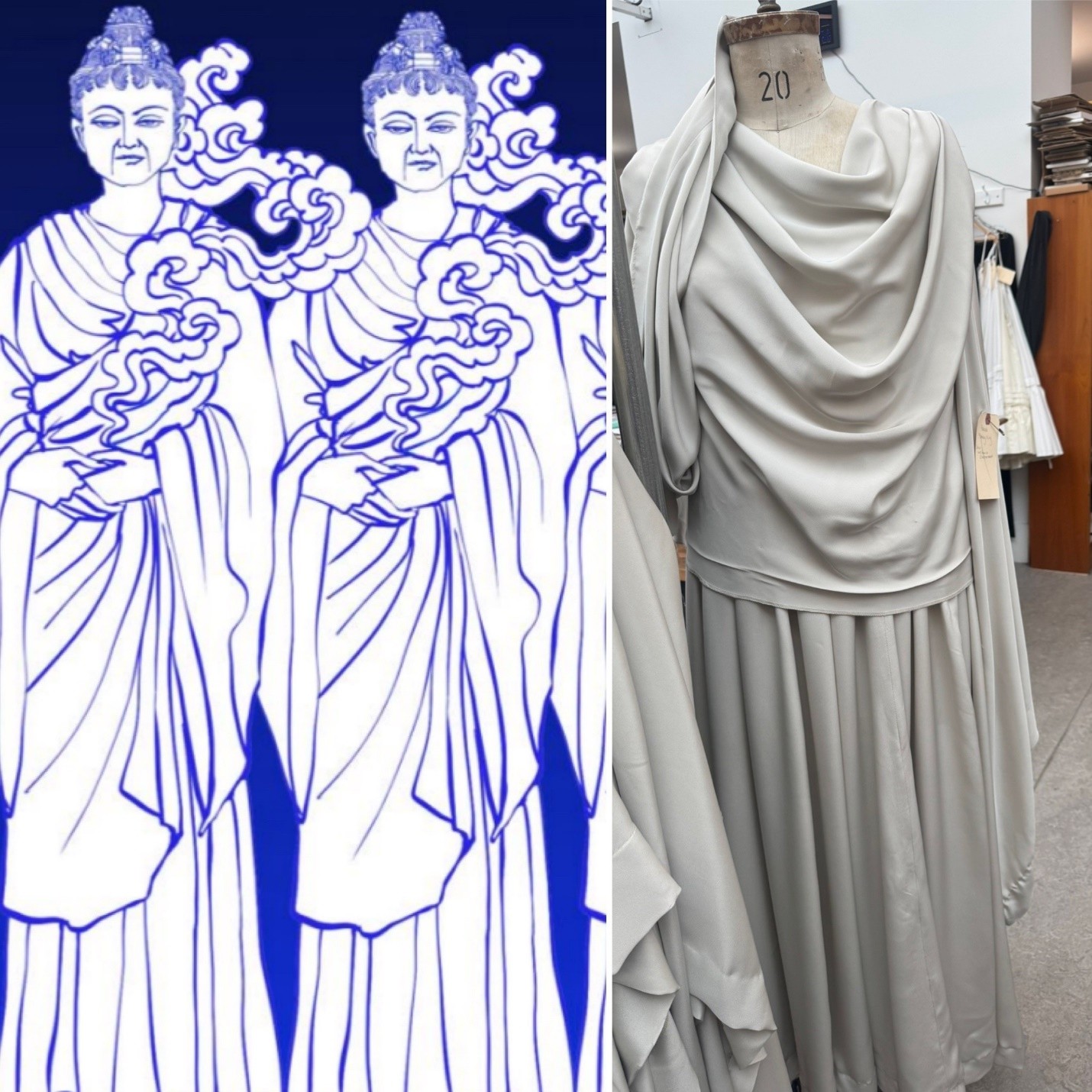
It's imperative that once we start cutting the actual fabrics for costumes that we have everything solved in terms of shape, structure and fit. That is particularly important for more structural costumes like those in The Monkey King, and you see that below in the costume for The Crab General who works for Ao Guang, Dragon King of the East Sea. You can see how we first build a muslin mock-up of the costume which will allow us to work with our costume designer, Anita Yavich, to make adjustments to the form, fit, and the detailed design (see for example the mock-up on the cuff). It is much easier (and cheaper!) to make adjustments in muslin than it is in the actual fabrics!

These kinds of mock-ups are also used in Parsifal, and it’s particularly imperative to get the details correct for any costume made out of leather. Once you cut leather, there is no going back! Our tailor, Sally Thomas is making tenor Brandon Jovanovich’s Red Knight costume—the costume in which he enters the world of the Flower Maidens whom we met at the beginning of this article. It is a stunning design, and it must fit Brandon like a glove. Sally will wait until Brandon gets here for rehearsals and will fit the mock-up onto him before making the actual costume. That is a very common practice for anything that involves leather.
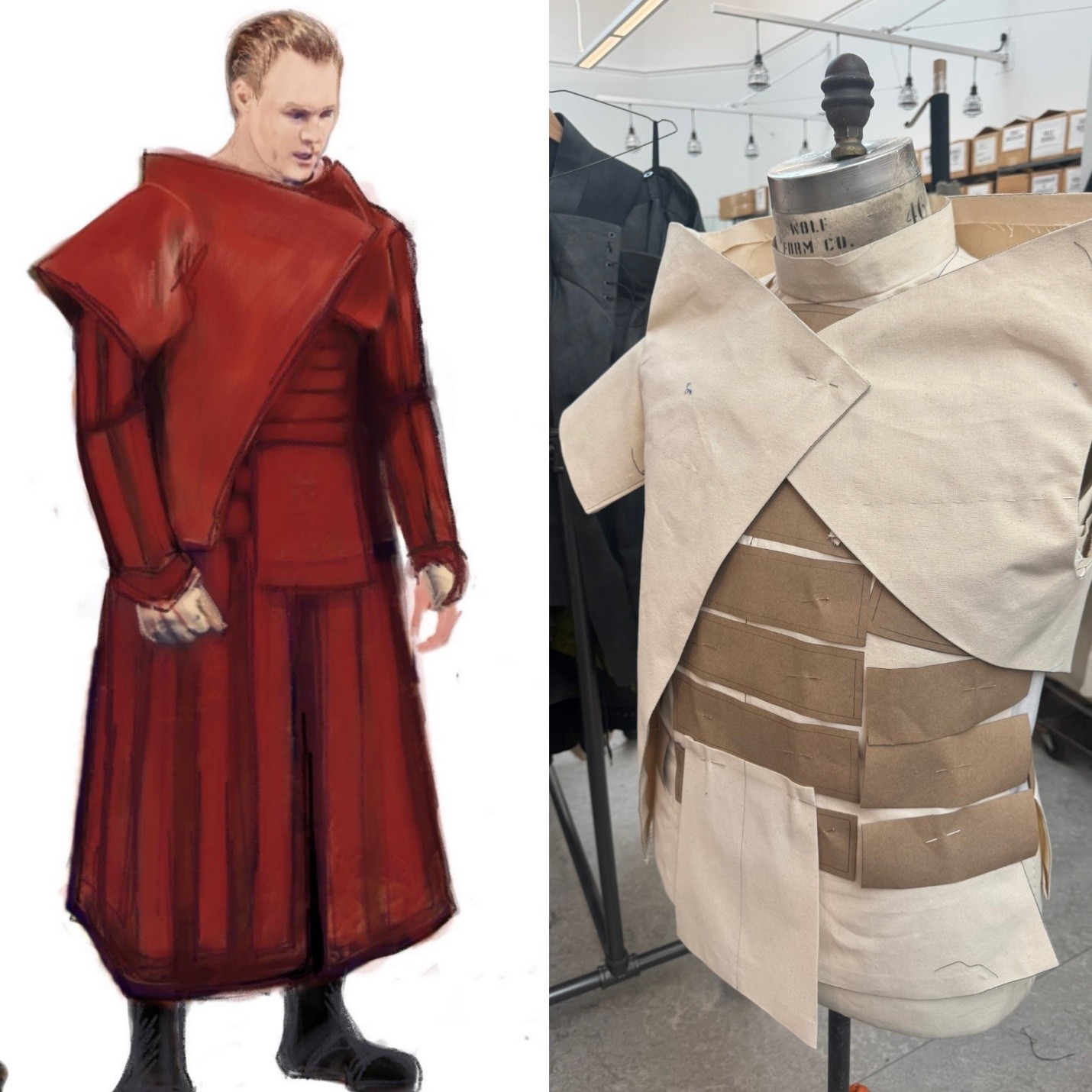
Moving down further through the Costume Shop, we get to our crafts and millinery area, and here some exciting things are taking shape for both operas.
For Parsifal our Senior Milliner Paula Wheeler is working in tandem with our Head of Wig and Make-up, Jeanna Parham, to create these stunning headpieces for our Flower Maidens. They are a mixture of sculptural wire headpieces intertwined with the wig itself—a wonderful collaboration between two departments.
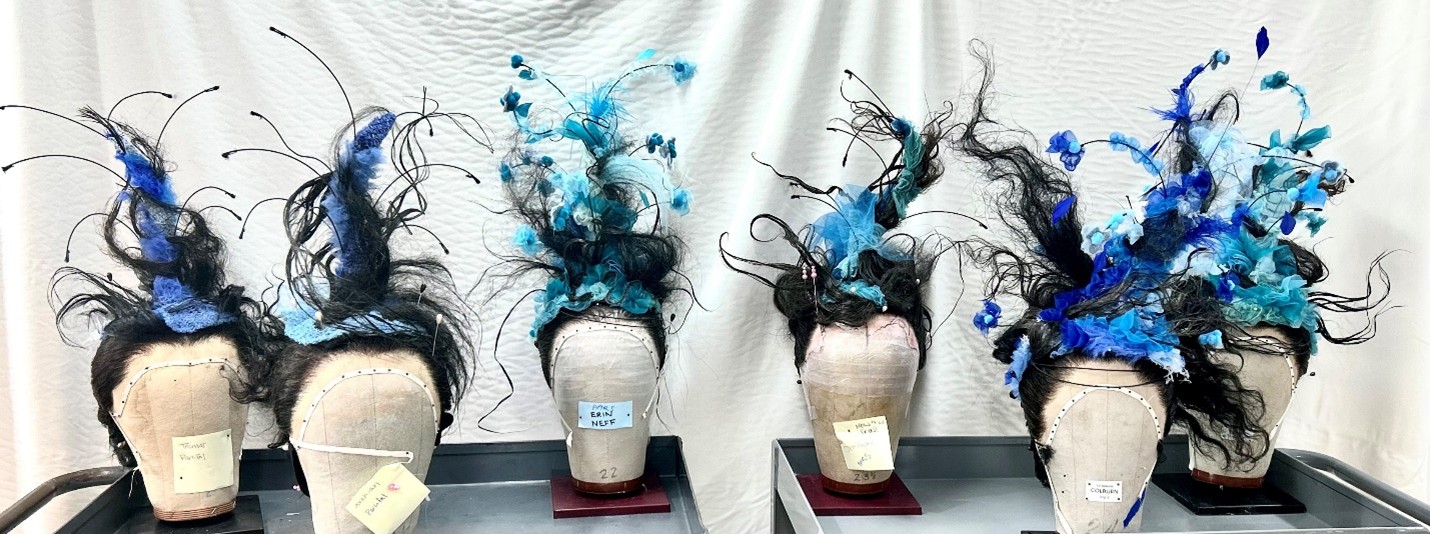
Our Senior Craftsperson Jersey McDermott is then working to create some fantastical creations for The Monkey King. First up is the monkey mask which needs to be lightweight and workable for singing. Jersey creates a series of Varaform basic masks, stretched over a standard face shape and then paints those and adds hair to create the monkey design.
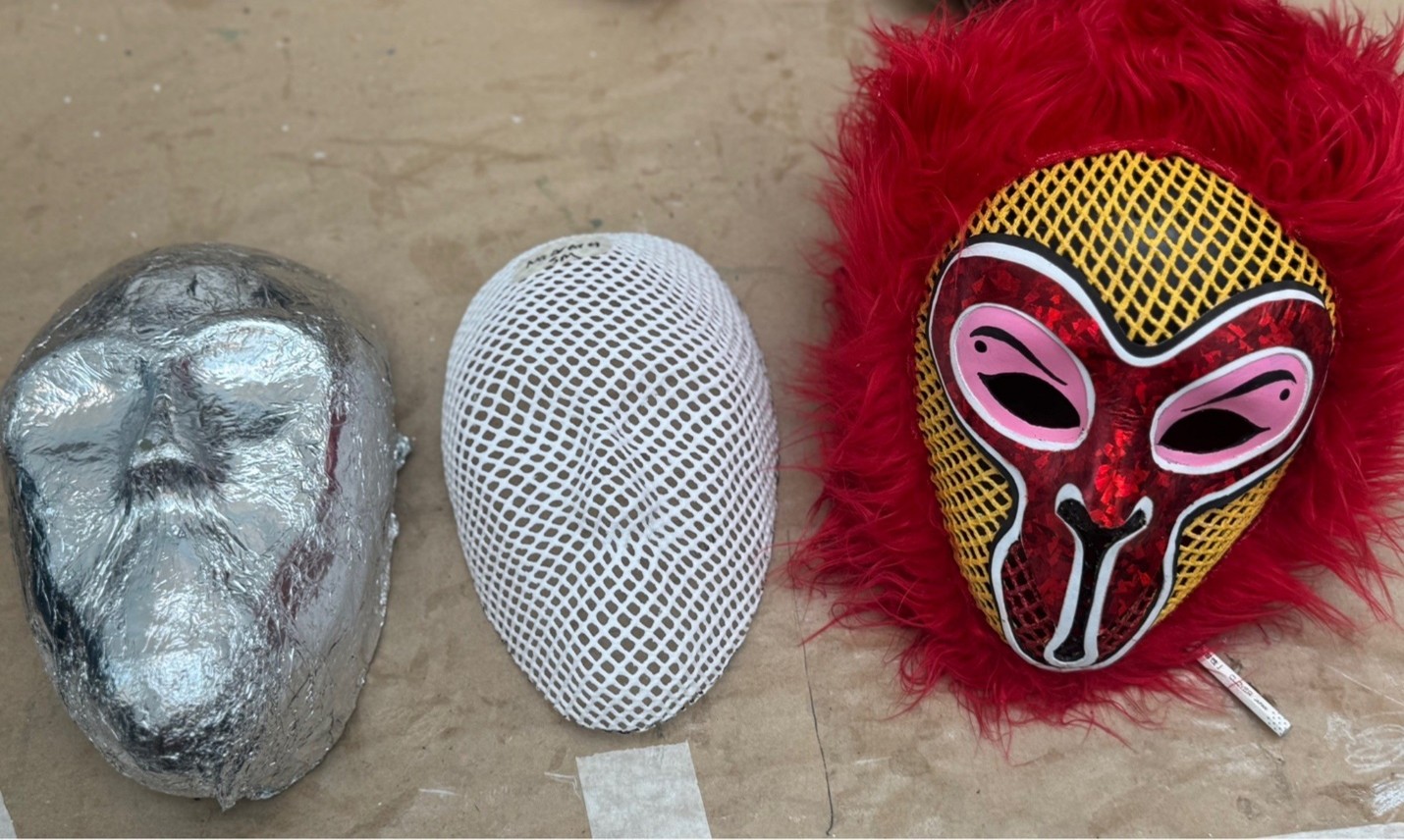
But the fun is just beginning…Jersey is also creating the heads of our sea creatures who appear when the Monkey descends to the world of the seas to secure the largest weapon he can find. These adorable and spectacular looking creatures of the deep have a thermoplastic Varaform shell (similar to the monkey above), with the Varaform pulled and stretched over a Styrofoam base. You can then see the R&D work that Jersey is doing to create the patterns for the fins and gills. I cannot wait to see these on our stage!
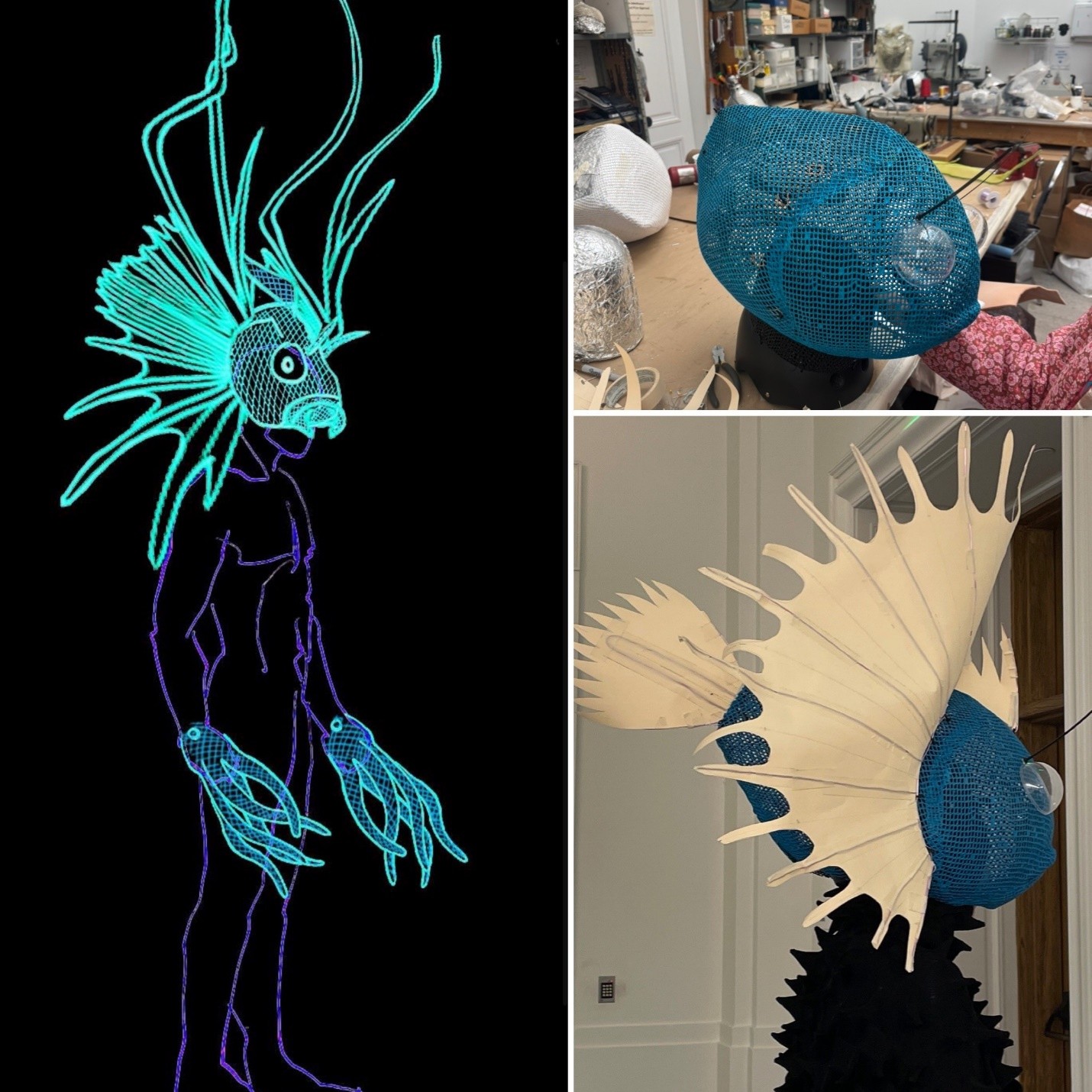
This is a particularly busy year for the Costume Shop, not only with two brand-new builds side by side, but with both of these productions having non-traditional elements that need to be both R&D’d and then created. This is where the extraordinary expertise of our Costume department comes to the fore: their level of skill and talent allow them to find ways to create these costumes in ways that i) reflect the designs, ii) work for artists onstage, and iii) are done in the most cost-effective way possible. And all this while also working on the other productions for this year including Rigoletto, itself a significant costume show with all those great Renaissance leather doublets and hose.
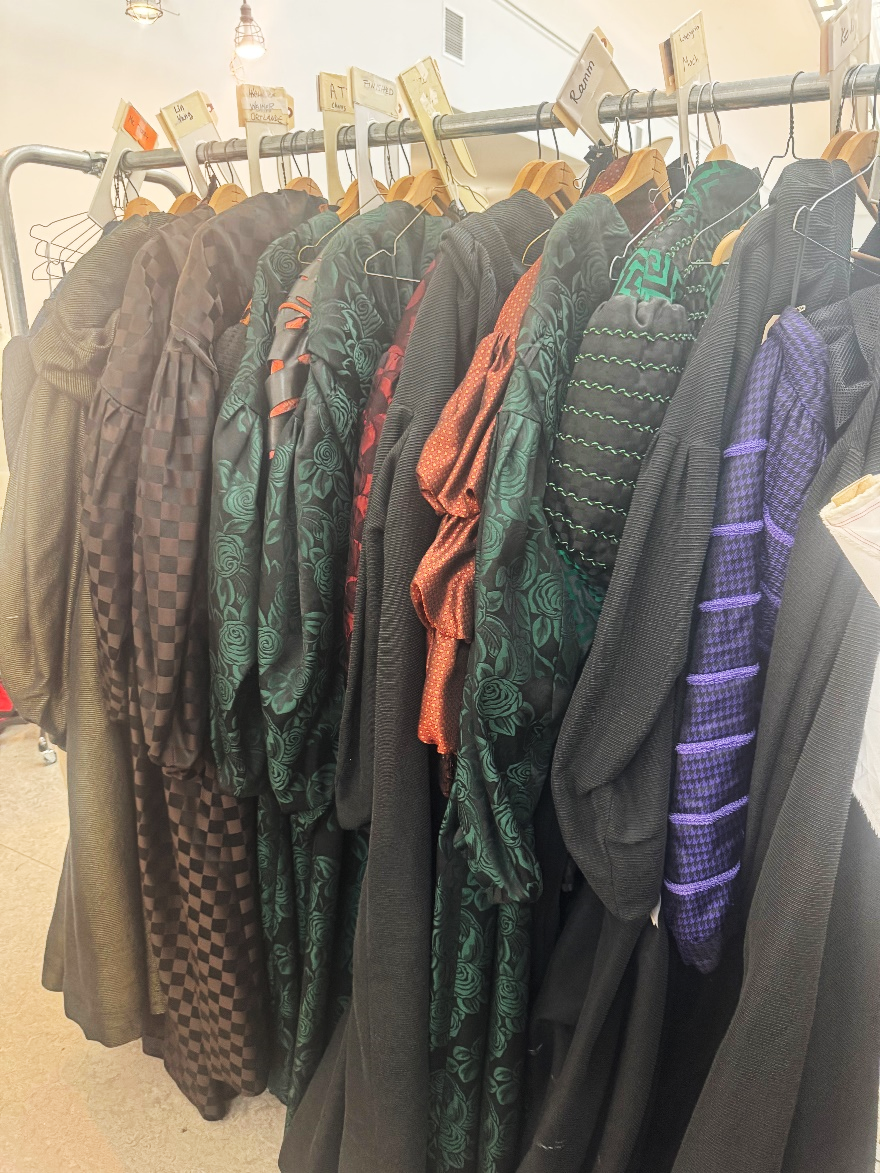 Costumes designed by Constance Hoffman for our upcoming production of Rigoletto.
Costumes designed by Constance Hoffman for our upcoming production of Rigoletto.
The Norby Anderson Costume Shop is one of the most creative places in the Bay Area, and it’s thrilling to see it bringing these two brand new productions to life with such amazing ability: R&D’ing even the most complex of problems and coming up with solutions that will be seen on our stage in just a few months. I cannot wait!
 The Norby Anderson Costume Shop
The Norby Anderson Costume Shop

